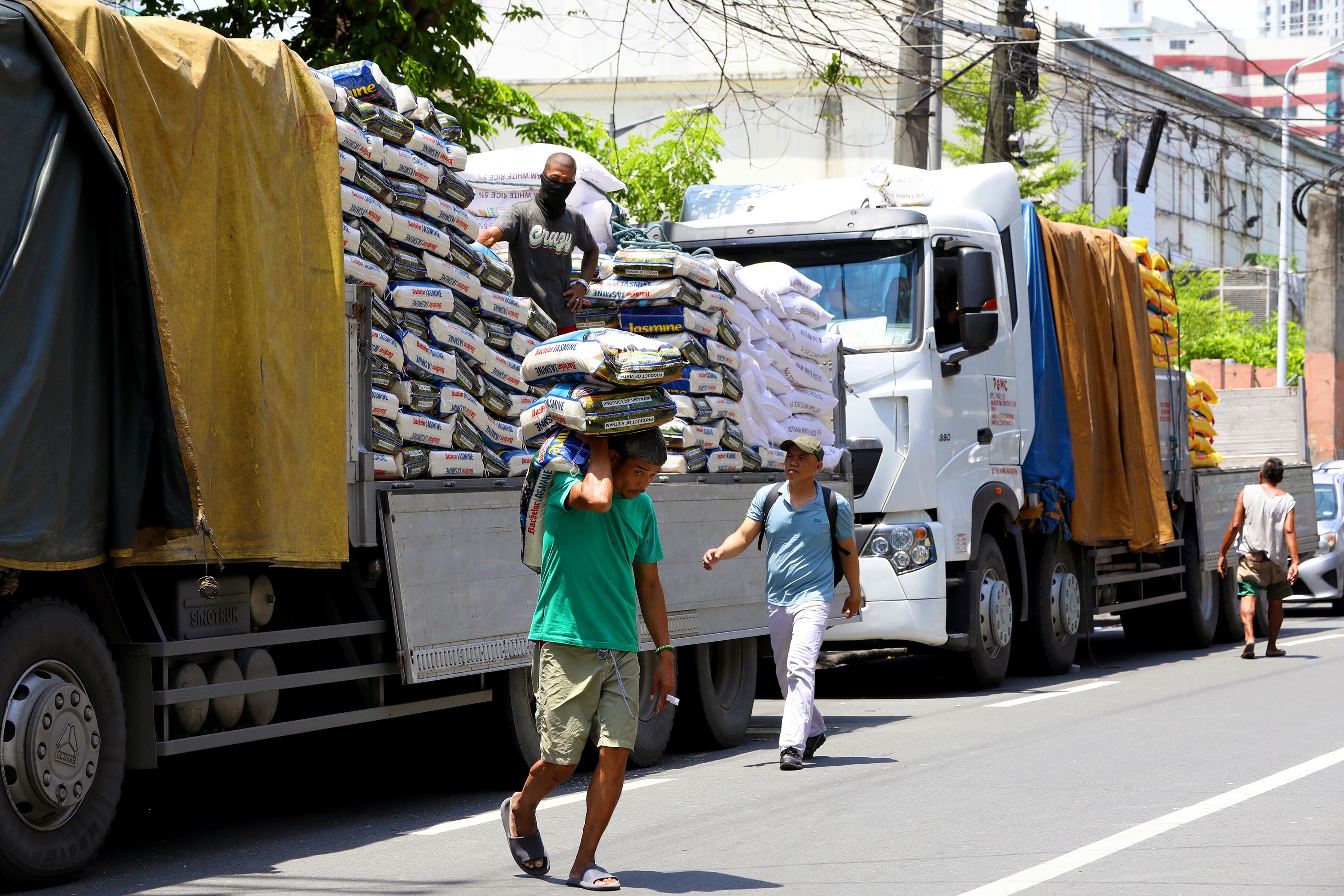Reducing tariffs on rice and other food items from 35 to 15 percent until 2028 is not expected by many in the agriculture sector to reduce prices of these items in the local market, but would only redound to the importers and their business interests.
There is also speculation that the expected surge in rice imports and those of other food products were meant to ensure the business viability (in terms of supply assurance) of those near to people in power.
A study by BMI, a company of business and credit analytics Fitch Solutions, said the reduced tariffs may not immediately lower prices as world market quotations remain elevated.
BMI said the shortfall in rice production (from El Niño and subsequent heavy rains), forecasted by the United States Department of Agriculture (USDA), will contribute to the high cost of rice in the domestic market.
Short-lived gains?
Citing data from the Food and Agriculture Organization (FAO), BMI said the average retail prices for regular- and well-milled rice in the Philippines stood at P51.03 per kilogram and P56.06 per kilogram, respectively, both of which were around 25 percent higher than 12 months earlier, Business World reported.
“In the immediate term, the reduction in rice import tariffs could see domestic rice price pressures in the Philippines ease—notwithstanding the widening in the Philippine domestic rice production deficit between 2023/24 and 2024/25 that the USDA forecasts,” BMI said.
It cited the “feedthrough time lag” as reason why domestic prices would not decline in the immediate term despite the reduced tariffs, which it said would benefit the country’s largest source of imported rice, Vietnam and its rice traders.
The reduced tariff, it said, could lead to larger rice import volumes from the Philippines (being the second world largest importer in 2023 cornering 5 percent of global import volumes) leading to even higher rice prices in the global market.
“We note, however, that international rice prices remain elevated and that—with India’s rice export restrictions still in place and the negative impact of the recent El Niño event on rice production in Southeast Asia, the international rice market remains tight, which could, therefore, see an increase in Philippine import demand stimulate upward international price pressures,” BMI said in a statement.
BMI, citing government data, said total grain imports, including rice, corn, wheat, and other grains, in the first quarter of 2024 amounted to $1.173 billion, equivalent to a 27.9-percent increase compared to the first quarter of 2023. Of this amount, $489 million or 41.7 percent was sourced in Vietnam at $355 million and Thailand at $134 million.
In May 2024, BMI noted that FAO’s All Rice Price Index (FARPI) came in at 137.3, equivalent to a 7.4 percent increase on its level of May 2023.
In August 2023, the FARPI increased 10 percent month on month due to India’s introduction of an export ban on basmati rice and a 20- percent export duty on parboiled rice and has since oscillated around 140.
Rate cuts
BMI said given recent developments and expectations that the impact of the lower rice tariffs will be delayed, it expects the Bangko Sentral ng Pilipinas (BSP) to only cut interest rates starting in September. The BSP is expected to cut rates by 50 basis points, lower than its initial forecast of 75 basis points.
This means the BSP’s next policy meeting in August will see the Monetary Board retaining rates and holding off until the US Federal Reserve begins its loosening cycle.
This is despite BSP Governor Eli M. Remolona Jr. hinting at the possibility of a rate cut in August. “In our view, such an early cut remains out of the question even if price pressures ease substantially,” BMI said.
BMI said the main hindrance for BSP to decide on loosening its monetary policy is currency stability. “The peso is among the ‘poorest performing currencies in the region,’ second only to Japan,” it added.
“As such, the BSP will be extremely mindful of a pre-emptive return to monetary loosening, for fear of exacerbating weakness in the already weak peso,” BMI said.
“This feeds into our expectations for the BSP to embark on its first cut only in October at the earliest. The monetary cycles of both the Philippines and the Fed tend to track each other closely,” it added.
#WeTakeAStand #OpinYon #USDA #FARPI #BSP #RiceTariff
